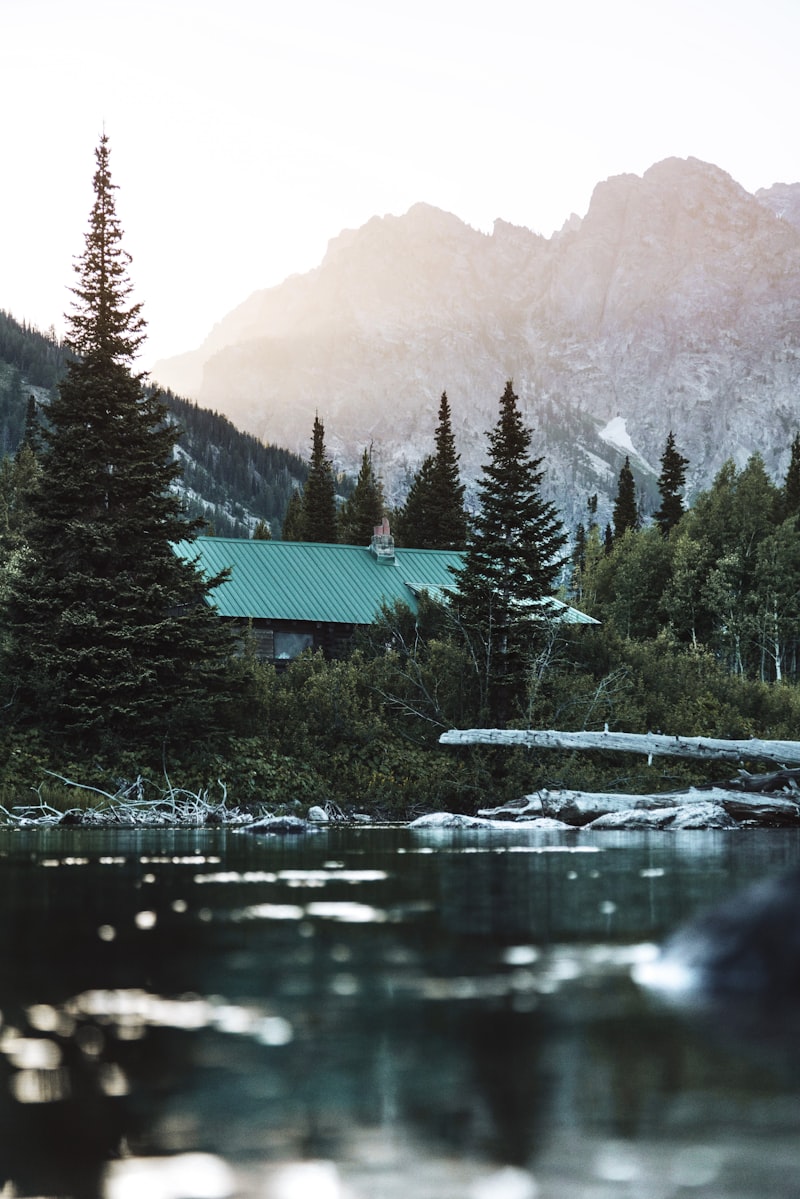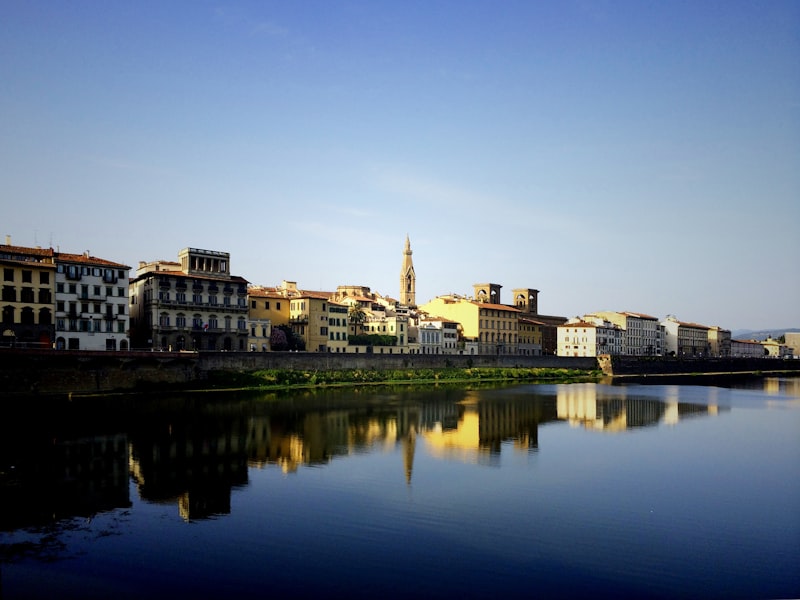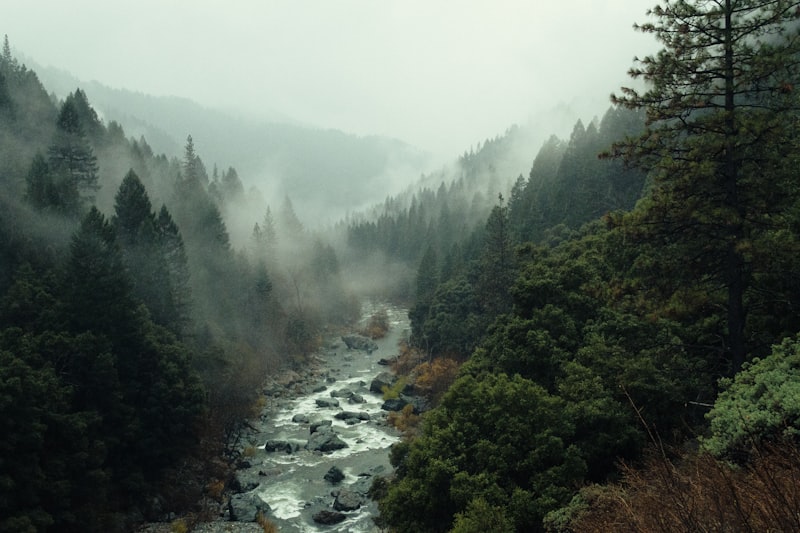At its core, river erosion is fueled by the sheer force of moving water. As rivers rush downstream, they pick up sediment and debris, acting as a natural conveyor belt. This sediment isn’t just random dirt—it’s the building blocks of landscapes. Over time, the constant movement of water wears down riverbanks and bedrocks, carrying away particles bit by bit.
Think of it as a gradual reshaping. Rivers don’t sculpt masterpieces in a day; it’s a patient artist, crafting valleys that echo with history. The Grand Canyon didn’t form overnight but through eons of erosion, layer by layer, revealing the Earth’s ancient past in its colorful striations.
But rivers aren’t just sculptors; they’re architects too. They create floodplains that sustain diverse ecosystems, nurturing life along their banks. It’s a delicate balance of power and nurturing, where erosion creates opportunity for growth.
Yet, erosion isn’t always a gentle process. During heavy rains or floods, rivers can turn fierce, reshaping landscapes in dramatic bursts. They can carve new channels, shift course unexpectedly, reminding us of their raw power.
Understanding river erosion isn’t just about geology—it’s about appreciating nature’s ability to shape our world. It’s a reminder that even the smallest streams contribute to the grand canvas of our planet, painting valleys, carving canyons, and nurturing life along their winding paths.
Unveiling Nature’s Sculptor: How River Erosion Shapes Landscapes
Picture a river flowing gracefully through a mountainous terrain. As it meanders along its path, it carries with it sediment and rocks, slowly but steadily eroding the land around it. This process, known as fluvial erosion, is one of the most powerful forces shaping our planet’s surface over millions of years.
The journey begins as rainwater gathers into small streams that eventually merge into rivers. These rivers, with their relentless flow, begin to wear down the hard rock and soil they encounter. Over time, the continuous movement of water against the land surface creates channels and valleys, transforming the landscape into a breathtaking tableau of natural beauty.
Take, for instance, the Grand Canyon in Arizona, USA. Carved by the Colorado River over millions of years, this immense chasm exposes layers of rock that tell a story of geological history. The river’s persistent flow, coupled with occasional floods, has steadily widened and deepened the canyon, revealing its intricate layers like pages in a history book.
Not all river erosion results in dramatic canyons; sometimes, it forms gentle slopes and rolling hills. The key lies in the type of rock and the speed of the water. Softer rocks erode more quickly, while harder rocks may resist erosion, creating diverse landscapes of hills, valleys, and plains.
Moreover, rivers don’t just erode; they also deposit sediment downstream, forming fertile floodplains and deltas that sustain abundant wildlife and agricultural activities. These deposits are vital for ecosystems and human societies alike, offering fertile soils and freshwater resources.
From Banks to Basins: Understanding the Force Behind River Erosion

Rivers, seemingly serene, possess immense power as they flow. Their currents, laden with sediment, act like sculptors on the Earth’s crust, carving valleys and canyons over millennia. The force of erosion is driven by the relentless movement of water, which picks up rocks, pebbles, and soil, wearing down surfaces along its path. This process intensifies during periods of high flow or flood events, where the volume and speed of water amplify its erosive capabilities.
Factors influencing river erosion vary widely. Gradient plays a pivotal role, with steeper slopes accelerating water velocity, thereby increasing erosive power. Likewise, the type of sediment carried by the river impacts erosion; softer materials yield more readily to water’s force compared to hard bedrock. Additionally, human activities such as dam construction alter river flow patterns, potentially exacerbating erosion downstream.
Analogous to a chisel on marble, rivers sculpt landscapes through abrasion, where particles carried in the water grind against riverbanks and bedrock, gradually wearing them away. Hydraulic action, another facet of erosion, occurs when water forcibly dislodges sediment through its sheer force. This process is especially potent in areas prone to flash floods or where rivers meander, creating oxbow lakes by eroding through meander necks.

Metaphorically, river erosion is akin to a master craftsman continuously refining his work, each sweep of water reshaping the canvas of Earth’s surface. Understanding this force is crucial for geologists, environmental scientists, and engineers tasked with managing riverine landscapes and mitigating potential hazards such as bank collapse or channel avulsion.
River erosion epitomizes nature’s ability to mold and transform landscapes over time. Its relentless force, driven by water’s motion and sediment load, shapes valleys, deltas, and canyons alike. By comprehending the mechanisms behind this process, we gain insights into the ongoing evolution of Earth’s geological features, underscoring the dynamic interplay between water and land.
The Silent Remodeler: River Erosion’s Impact on Environment and Ecology
Imagine a river meandering through lush valleys and rugged canyons, its waters carving through rock and sediment with patient persistence. Each bend and curve tells a tale of erosion’s slow yet transformative power. As the river erodes its banks, it not only sculpts the land but also transports sediment downstream, replenishing fertile floodplains and deltas.
Ecologically, river erosion plays a dual role of creator and destroyer. It creates habitats for diverse aquatic species by forming pools, riffles, and deep channels. These habitats sustain rich biodiversity, from fish to amphibians, and provide crucial breeding grounds and nurseries for many organisms. On the flip side, excessive erosion can destabilize riverbanks, leading to sedimentation and altering water quality, which can harm aquatic life and disrupt entire ecosystems.
The environmental impact of river erosion extends beyond the water’s edge. Sediment transported by rivers can influence nutrient cycles in downstream ecosystems, enriching soils in floodplains and deltas. This natural fertilization supports agriculture and sustains livelihoods dependent on fertile lands.

Moreover, the geological legacy of river erosion is evident in the landscapes it sculpts. From majestic canyons to meandering oxbow lakes, these features are testament to the erosive power of water over millennia. They serve as natural archives, revealing the dynamic history of Earth’s surface and the resilience of ecosystems adapting to constant change.
While river erosion operates quietly, its effects resonate loudly throughout the environment and ecology. It shapes landscapes, supports biodiversity, and influences human activities in profound ways. Understanding and managing river erosion is essential for preserving natural habitats, sustaining ecosystems, and mitigating its potential hazards on communities living along riverbanks.
Eroding Boundaries: Exploring the Geographical Reach of River Erosion
Imagine standing on a riverbank, witnessing the ceaseless flow of water against the earth. Rivers, over millennia, carve their paths through valleys, plains, and even mountains, redefining boundaries and reshaping geography. The Amazon River, for instance, spans vast distances, eroding banks and depositing sediments downstream, altering ecosystems and human settlements alike.
The geographical reach of river erosion extends beyond mere physical boundaries. It influences ecosystems, biodiversity, and human activities along its course. In Bangladesh, the mighty Brahmaputra River erodes its banks during monsoon seasons, causing floods that affect millions. Conversely, in arid regions like the American Southwest, rivers like the Colorado carve canyons, revealing layers of geological history through erosion.
The impact of river erosion transcends the natural world, influencing human settlements profoundly. Ancient civilizations flourished along riverbanks due to fertile soils deposited by seasonal floods. However, unchecked erosion can lead to land loss, threatening infrastructure and livelihoods. Managing river erosion becomes crucial for sustainable development and environmental conservation.
River erosion exemplifies nature’s relentless force, continually shaping and reshaping landscapes worldwide. Understanding its geographical reach unveils the dynamic relationship between watercourses and the earth. As we explore these processes, we gain insights into both the challenges and opportunities presented by nature’s ongoing transformations.
Harnessing the Power Within: Studying River Erosion for Sustainable Development
Imagine a river as a master sculptor, continuously chiseling away at the earth’s surface. Every curve, every meander tells a story of persistence and change. The erosive power of rivers not only alters the land but also influences the distribution of resources and habitats. It’s a dynamic force that demands respect and careful study.
By delving into river erosion, scientists and engineers gain insights into how to manage its effects. For instance, studying the flow patterns and sediment transport helps in designing stable bridges and dams that can withstand nature’s forces. Farmers benefit from understanding how rivers deposit nutrient-rich soil, creating fertile floodplains ideal for agriculture.
Moreover, river erosion plays a crucial role in ecological balance. It shapes habitats for diverse species of flora and fauna, fostering biodiversity hotspots along riverbanks and deltas. Conservation efforts often hinge on preserving these natural processes while mitigating risks posed by human activities.
In essence, harnessing the power of river erosion involves more than passive observation—it requires proactive planning and sustainable practices. Communities that rely on rivers for water supply or transportation must adapt to the changing landscape while minimizing environmental impact. Balancing human needs with the natural rhythms of erosion ensures that future generations can benefit from these vital waterways.
Frequently Asked Questions
What are the different types of river erosion?
Explore the various types of river erosion, including hydraulic action, abrasion, attrition, and solution. Understand how each process shapes river landscapes and impacts surrounding environments.
How does human activity impact river erosion processes?
Human activity can significantly accelerate river erosion processes by altering natural flow patterns, removing vegetation that stabilizes riverbanks, and increasing sedimentation through construction and agriculture. Understanding these impacts helps in managing and mitigating erosion risks.
What factors influence river erosion?
Factors influencing river erosion include water flow rate, sediment load, bedrock type, and the presence of vegetation. These elements affect how quickly rivers erode their channels and surrounding landscapes.
What methods are used to mitigate river erosion?
Discover effective methods employed to mitigate river erosion, ensuring stability and protection of riverbanks and adjacent areas. Learn about sustainable techniques such as bank revetments, vegetation restoration, and engineered structures like gabions and groynes.
How does sediment transport contribute to river erosion?
Sediment transport plays a critical role in river erosion by carrying particles downstream, where they abrade and erode riverbanks and beds. This process alters the river’s course and morphology over time.



